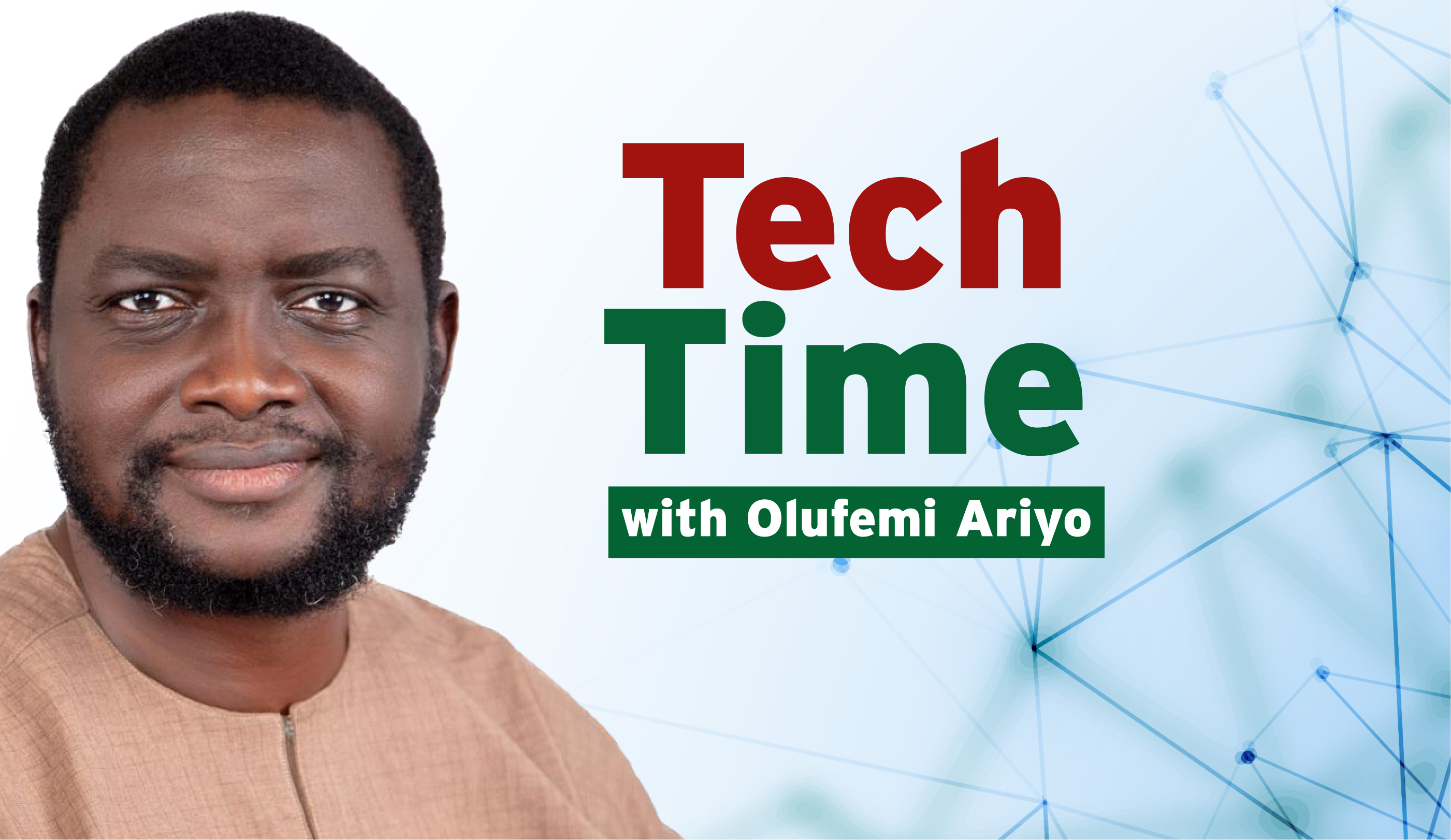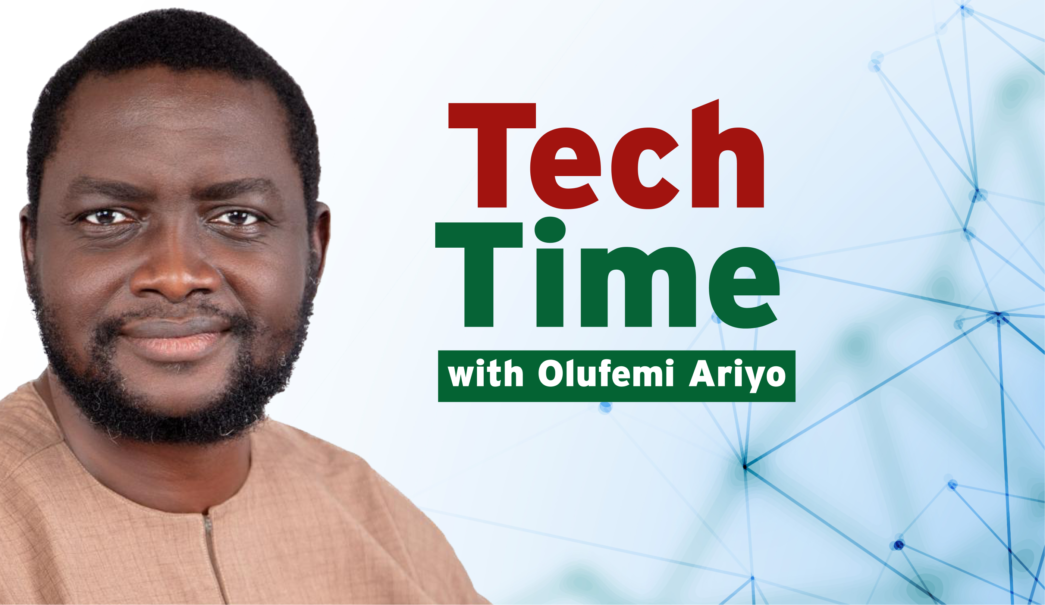As we stand at the crossroads of medicine and technology, a quiet revolution is reshaping how we approach healing and recovery. No longer confined to the realms of gaming or cryptocurrency, technologies like Virtual Reality (VR), Augmented Reality (AR), the metaverse, and blockchain are emerging as powerful forces within healthcare — with particularly profound implications for physical rehabilitation. These innovations are transforming traditional therapy into immersive, data-driven, and highly personalised experiences. From remote VR-powered physiotherapy sessions to blockchain-secured patient records and AI-assisted diagnostics, the integration of these technologies is addressing longstanding challenges in accessibility, efficiency, and trust. This article explores how the convergence of the metaverse and blockchain is redefining the future of healthcare and physical therapy — and how forward-thinking practitioners, developers, and investors can take advantage of this paradigm shift.
One of the clearest examples of this digital transformation can be seen in how physical rehabilitation is becoming more engaging, precise, and accessible through virtual technologies.
- Physical Therapy & Rehabilitation in the Metaverse
(a) Reimagining Recovery
Advertisement
The traditional model of physical rehabilitation — often repetitive, time-consuming, and demotivating for patients — is undergoing a radical change through immersive technologies. Virtual Reality (VR) and Augmented Reality (AR) are enhancing patient engagement while also fundamentally reshaping how therapy is delivered, experienced, and measured. In metaverse-enabled rehab programs, patients recovering from strokes, spinal cord injuries, or orthopaedic surgeries are placed in gamified, interactive virtual environments that mimic real-life tasks or therapeutic exercises. For example, a stroke survivor might relearn upper-limb coordination by reaching for virtual fruits in a digital orchard, or a patient with a knee injury could simulate walking up stairs in a VR-rendered apartment. These environments are designed to stimulate neuroplasticity (the brain’s ability to rewire itself) making recovery more effective and even enjoyable. This immersive approach taps into the brain’s cognitive and sensory feedback loops, allowing patients to stay engaged and motivated throughout their therapy sessions. It goes beyond distraction; it actively accelerates physical and neurological recovery by turning repetitive rehabilitation tasks into goal-oriented challenges, encouraging long-term commitment to treatment plans.
Moreover, tele-rehabilitation, powered by metaverse platforms and wearable devices, adds another layer of accessibility. Patients can now receive physical therapy in the comfort of their own homes, guided by real-time feedback from motion sensors, haptic devices, and AI-assisted tracking systems. Therapists, meanwhile, can observe movement patterns, evaluate progress, and adjust programs remotely — all while maintaining a high standard of care. This model not only improves continuity of care but also extends access to therapy for individuals in rural or underserved communities.
Advertisement
(b) Real-World Adoption
The shift is no longer theoretical. Companies like XRHealth, MindMaze, RehabVR, and Neuro Rehab VR are pioneering the use of immersive rehab platforms globally.
- XRHealth integrates FDA-registered VR therapy programs with real-time analytics, enabling clinicians to track patient data and modify treatments as needed.
- MindMaze combines neuroscience, machine learning, and VR to deliver neuro-rehabilitation for stroke patients, creating precise digital twin environments that adjust based on motor performance.
- Neuro Rehab VR partners with physical therapy clinics to offer cognitive-motor exercises using off-the-shelf VR headsets, reducing barriers to adoption.
These companies exemplify a shift toward data-driven, patient-centric rehabilitation, using AI to personalise care and improve outcomes — a far cry from the one-size-fits-all approach of traditional therapy models.
Advertisement
(c) Monetisation Potential
The intersection of healthcare and immersive tech is not just clinically transformative — it is commercially viable:
- Startups can develop proprietary VR therapy platforms licensed to hospitals, rehab centres, and insurance providers. With growing demand for digital health tools, these platforms can integrate diagnostics, therapy, and data analytics into a single solution.
- Clinics and hospitals can lower operational costs by reducing in-person session loads, while expanding reach through remote VR therapy. This model supports higher patient throughput, with lower geographic limitations and better outcome tracking.
- Independent therapists and practitioners can deliver care across borders, tapping into global markets and serving patients in remote or medically underserved areas. Through subscription models or on-demand platforms, they can scale their practice with minimal physical infrastructure.
- Insurance providers and health systems are also beginning to explore reimbursement models for digital rehab services, especially when cost savings and efficacy are demonstrable — further reinforcing the revenue potential.
In summary, VR and AR-enabled physical therapy in the metaverse is more than a trend — it is a strategic evolution of care. It improves clinical outcomes, reduces access barriers, and unlocks new economic models for healthcare delivery. As adoption accelerates and hardware becomes more affordable, the fusion of immersive tech with therapy promises better healing alongside a more human, engaging, and scalable model for global rehabilitation.
Advertisement
While VR and AR are redefining the patient experience, blockchain is quietly transforming the backbone of healthcare infrastructure — starting with how data, trust, and incentives are managed.
Advertisement
- Blockchain Integration in Healthcare
(a) Secure, Transparent Health Data
In an industry where data privacy, integrity, and interoperability are paramount, blockchain technology is notably a powerful enabler of secure and patient-centric healthcare systems. By storing medical records on decentralised, tamper-resistant ledgers, blockchain ensures that health data is immutable, transparent, and instantly accessible to authorised stakeholders ranging from doctors and specialists to insurers and patients themselves.
Advertisement
Unlike traditional Electronic Health Record (EHR) systems that are siloed, prone to breaches, or difficult to synchronise across institutions, blockchain-based platforms create a single source of truth that travels with the patient. This improves the continuity of care — for example, allowing a patient recovering from a sports injury in the UK to share verified therapy progress and imaging data with a specialist in the U.S. without intermediaries or risk of manipulation.
In emergencies, blockchain can enable instant, verified access to a patient’s medical history, even across borders — potentially saving lives when time is critical.
Advertisement
Additionally, smart contracts (self-executing code embedded on the blockchain) are streamlining operational bottlenecks. These contracts can automatically trigger payments, insurance reimbursements, or approvals once pre-agreed criteria are met. For example, a therapist could be paid automatically when a patient completes a treatment milestone, or an insurer could approve a follow-up MRI based on transparent, verifiable data. This reduces administrative overhead, minimises fraud, and speeds up care delivery.
(b) Patient Incentives & Behavior Change
Beyond data management, blockchain is also reshaping patient engagement. Several emerging platforms are integrating tokenised health economies, where patients are rewarded for healthy behavior and treatment adherence.
For instance:
- A patient who consistently completes their VR-based physical therapy sessions might receive crypto tokens as incentives.
- These tokens can be redeemed for wellness services, healthcare discounts, or digital goods such as NFTs that track and celebrate milestones.
- Some platforms go further, tying incentives to community-based health challenges, turning recovery into a social, rewarding experience.
This gamified, blockchain-powered incentive model taps into behavioural science to promote compliance, reduce drop-offs in long-term treatment plans, and foster a sense of progress and reward — particularly valuable in physical rehab, where consistency is critical.
(c) Real-World Examples
- Care uses blockchain to manage patient care pathways and payments, enabling transparent provider-patient-insurer interactions.
- Medicalchain allows for secure patient health records that can be shared across different providers with patient-controlled access.
- BurstIQ leverages blockchain for health data marketplaces and compliance-ready data exchanges between providers, researchers, and innovators.
- Healthereum integrates patient engagement tokens that reward users for attending appointments, completing feedback, or following health routines.
These platforms are proof that blockchain isn’t just a backend infrastructure — it is becoming a frontline tool for engagement, accountability, and transparency.
(d) How to Profit
As blockchain matures within the healthcare space, it opens multiple avenues for innovation and monetisation:
- Build or Invest in Blockchain Health Data Platforms: Create decentralised EHR platforms that integrate with existing hospital systems and offer seamless, patient-controlled data access. These platforms can monetise through licensing, data analytics services, or B2B subscriptions.
- Develop Decentralised Insurance Models: Launch health insurance products powered by blockchain and smart contracts. These systems can automate claim processing, prevent fraud, and offer usage-based pricing models — appealing to younger, tech-savvy demographics.
- Tokenise Treatment Compliance: Create platforms where patients earn rewards (in tokens or NFTs) for consistent therapy participation. These could be:
- Branded NFTs linked to recovery milestones
- Interoperable tokens usable across wellness platforms
- Smart wallets integrated into existing therapy apps
- Enable Data Monetisation for Patients: Empower patients to license access to anonymised health data for research or clinical trials in exchange for crypto-based rewards — ensuring ethical data use with transparent consent.
In summary, blockchain is not a silver bullet, but it offers powerful tools to solve healthcare’s most persistent problems — from data fragmentation and patient disengagement to insurance inefficiency and lack of trust. When integrated with the metaverse, AI, and remote health platforms, blockchain helps build a secure, equitable, and participatory healthcare ecosystem — one where patients are not mere recipients of care, but active stakeholders in the system. The future of therapy won’t just be immersive, it will be transparent, decentralised, and incentivised.
Just as blockchain secures the systems behind care, immersive technologies are reshaping the care itself — especially in the emotionally complex realm of mental health.
- Mental Health and Neurotherapy in the Virtual Realm
(a) Immersive Therapy for the Mind
Mental health treatment is entering a new era — one where virtual environments, AI, and immersive technology are not simply augmenting therapy, but redefining how care is delivered. As the global mental health crisis deepens, and traditional systems struggle to scale, the metaverse is emerging as a safe, accessible, and stigma-free zone for therapeutic engagement. VR-based mental health interventions now span a wide range of conditions, including Post-Traumatic Stress Disorder (PTSD), anxiety, phobias, depression, and addiction recovery. These interventions allow patients to confront and process trauma, fears, or emotional triggers in carefully controlled and customisable virtual environments — something that would be impossible or unsafe in real life.
- Bravemind, developed by the University of Southern California’s Institute for Creative Technologies, has become a gold standard for treating combat-related PTSD. It guides veterans through gradual, immersive simulations of their traumatic experiences, allowing them to reprocess those memories with the support of a therapist.
- For patients with social anxiety or phobias, virtual scenarios like public speaking, airplane travel, or crowded streets can be recreated and repeated at the patient’s own pace. These exposure therapies, made more engaging through gamified elements, have been shown to reduce anxiety levels significantly while building resilience over time.
- VR mindfulness and meditation platforms, such as TRIPP and Liminal, transport users to tranquil, otherworldly environments designed to regulate stress, improve emotional regulation, and support daily wellness routines. These tools are also used in corporate wellness programs and schools.
(b) Next-Gen Cognitive Therapy: AI and Avatars
In addition to environmental immersion, AI-powered therapy is expanding access to care in unprecedented ways.
- Avatar-based CBT (Cognitive Behavioural Therapy) systems are allowing patients to interact with virtual therapists in the form of realistic, emotionally responsive avatars. These avatars can be customised to match the patient’s preferences, improving comfort and engagement, especially among younger or neurodiverse populations.
- AI-driven therapy assistants like Wysa, Woebot, and Replika already provide conversational support for anxiety, depression, or loneliness — with 24/7 availability and no human stigma. The next generation of these tools is moving into VR and metaverse environments, offering guided exercises, journaling, exposure tasks, and mood tracking within fully immersive emotional ecosystems.
When combined with biometric sensors, these AI companions can track changes in heart rate, breathing, or pupil dilation to assess stress levels and adjust the experience in real time — enabling personalised, data-informed mental health journeys.
(c) Privacy, Safety, and Blockchain
Given the deeply personal nature of mental health data, blockchain adds a critical layer of security and transparency. By storing session histories, therapy logs, and emotional progress data on decentralised, encrypted ledgers, patients can maintain full control over who sees their data — whether it is shared with a human therapist, a researcher, or a future provider. In today’s reality where digital trust is fragile, blockchain-backed therapy platforms reassure users that their mental health journeys remain private, unaltered, and self-owned.
(d) Business Opportunities in Virtual Mental Health
The convergence of mental health, immersive technology, and decentralised systems is opening tremendous business opportunities for innovators, investors, and service providers. Key areas include:
- Developing Immersive Mental Health Content
- Build VR/AR modules for specific conditions: PTSD, ADHD, OCD, anxiety, grief, etc.
- Partner with psychologists to design evidence-based therapeutic environments.
- License content to clinics, corporate wellness programs, or educational institutions.
- Subscription-Based Therapy-as-a-Service
- Launch platforms offering monthly subscriptions for access to immersive therapy, guided meditation, or avatar-based CBT.
- Collaborate with licensed therapists to provide hybrid (virtual + human) care plans.
- Integrate with insurance providers or health employers to offer group plans.
- Creating AI-Powered Therapy Companions
- Build intelligent, avatar-based therapy agents with adaptive emotional intelligence.
- Use blockchain to protect session data, consent agreements, and therapy histories.
- Monetise through freemium models, in-app purchases, or B2B licensing.
- VR-Enabled Support Groups & Community Spaces
- Create secure, virtual “healing hubs” for patients with similar experiences (e.g., trauma survivors, addiction recovery, grief support).
- Host live group therapy sessions or drop-in meditation rooms with expert moderators.
- Integrate gamification to reward participation and encourage progress.
In summary, mental health care is undergoing a profound shift ranging from passive, reactive treatment models to interactive, personalised, and proactive ecosystems powered by immersive tech. The virtual realm provides not just accessibility and engagement, but also dignity, safety, and data empowerment for users. As the stigma around mental health fades and demand for care surges, the metaverse is poised to become a sanctuary for healing — and a major frontier for impact-driven business innovation.
And as patients benefit from immersive tools, therapists and healthcare professionals are also transforming how they train, collaborate, and grow — thanks to the same technologies.
- Education & Professional Development for Therapists
(a) Virtual Classrooms, Real-World Impact
Today’s immersive technology is making education and professional development for therapists undergo a digital transformation that is improving access while elevating quality, consistency, and engagement. With Virtual Reality (VR) and Augmented Reality (AR), therapists in training ranging from physical therapists and occupational therapists to mental health professionals can now learn, simulate, and master clinical techniques in rich, 3D environments. This reduces reliance on costly equipment, physical labs, or in-person instruction, democratising access to high-quality medical education.
(b) Immersive Learning Environments
Virtual simulations allow students and professionals to:
- Explore interactive 3D models of the human body, diving into complex anatomy with full spatial awareness. Trainees can virtually “walk around” muscle groups, nerves, or skeletal systems — something no textbook can replicate.
- Practice manual therapy techniques with digital patients who respond in real-time. Haptic feedback devices can simulate resistance, movement, or pain responses, helping build tactile intuition and diagnostic confidence.
- Engage in VR-based diagnostic scenarios, such as assessing stroke recovery, joint mobility, or posture correction — then receive AI-generated feedback based on accuracy and performance.
- Participate in role-play scenarios for mental health training, simulating difficult patient conversations, trauma disclosures, or culturally sensitive interactions.
Institutions like Case Western Reserve University and Stanford Medicine have already implemented VR for anatomy and surgical simulation. Now, this is extending into rehabilitation sciences, psychology, and social work, providing therapists with more robust, practice-ready training experiences.
(c) Global Access to Professional Growth
The metaverse is dissolving borders in continuing education. Therapists in rural clinics, conflict zones, or under-resourced regions can now:
- Attend virtual conferences hosted by leading experts and institutions, without leaving their hometowns.
- Participate in hands-on workshops using AR/VR kits that simulate real-life therapy conditions.
- Join global peer learning groups and mastermind sessions in digital environments that is complete with real-time translation, virtual whiteboards, breakout rooms, and even clinical role-
- Access on-demand training modules on emerging topics like trauma-informed care, paediatric neuro-rehabilitation, or teletherapy best practices.
This is a paradigm shift in lifelong learning that is no longer limited by geography, cost, or institutional gatekeeping.
(d) Blockchain-Verified Credentials
Blockchain is also rejigging credentialing and verification:
- Certificates and licenses issued on blockchain are tamper-proof, time-stamped, and easily portable — ideal for professionals working across borders or in multiple jurisdictions.
- Therapists can store their continuing education records in secure digital wallets, and share them instantly with employers, licensing boards, or institutions.
- Learning platforms can automatically issue smart certifications once certain training hours, assessments, or peer evaluations are completed — streamlining compliance and record-keeping.
This infrastructure creates a trusted global credentialing ecosystem, making it easier for professionals to prove their skills and maintain transparency in their development journey.
(e) Profit Pathways & Business Opportunities
The convergence of immersive learning and blockchain credentialing presents lucrative avenues for entrepreneurs, educators, and healthtech innovators. Here’s how:
- VR Learning Platforms for Therapists
- Build subscription-based VR platforms offering immersive modules in anatomy, patient handling, communication, diagnostics, and rehabilitation techniques.
- Partner with universities, licensing boards, and professional associations to integrate into continuing education pipelines.
- Virtual Events and Conferences
- Host sponsored summits, virtual expos, and hands-on workshops in metaverse environments.
- Sell tiered ticket access (standard, VIP, sponsor booths) or offer institutional packages for clinics and schools.
- Provide interactive vendor spaces for medical equipment, therapy tools, or wellness brands.
- Blockchain-Credentialing Tools
- Launch services that issue decentralised educational credentials for therapy schools, health courses, or licensing boards.
- Build a blockchain-based talent registry of certified therapists that can be accessed by hospitals, NGOs, and insurers globally.
- Offer white-label blockchain APIs for existing e-learning platforms to issue smart certificates with verifiable records.
- Corporate Training & B2B Licensing
- Package therapist training modules for corporate wellness teams, health startups, or digital clinics.
- License immersive courseware to universities or medical schools seeking to modernise their curricula.
Overall, the transformation of therapist education through immersive tech and blockchain is not a mere trend, but a strategic evolution of the healthcare workforce. By empowering current and future therapists with smarter, more accessible, and verifiable learning experiences, we’re ensuring higher quality care for patients worldwide. The question is no longer whether the metaverse will impact professional development in healthcare — it is who will lead, build, and benefit from it.
But the ultimate power of these technologies may lie in their ability to deliver highly personalised care — where data, AI, and immersive environments converge to treat each patient as a unique individual.
- Personalised & Data-Driven Treatment
(a) Smarter Healing Through Data
We are currently moving into an era where rehabilitation and healthcare are no longer based solely on generalised protocols or one-size-fits-all approaches. Instead, the fusion of AI, wearable technology, virtual environments, and blockchain is giving rise to hyper-personalised, data-driven treatment plans tailored to each patient’s unique needs, biology, and behavior.
(b) Precision Therapy at Scale
Thanks to real-time data from wearable sensors, motion trackers, and biometric devices, therapists can now monitor everything from gait stability and joint range to heart rate variability and muscle activation — all in dynamic, immersive contexts. Patients recovering from surgeries, neurological trauma, or chronic pain conditions can engage in therapy regimens specifically optimised for their pace of recovery.
Digital twins (virtual representations of a patient’s physical state) can be created using this data, allowing clinicians to:
- Simulate outcomes based on different therapy protocols
- Predict setbacks or plateaus in recovery before they happen
- Customise exercises that adapt in real-time based on patient feedback or fatigue
- Track longitudinal health patterns across months or years
This is not simply a boost in convenience; but a radical transformation of treatment accuracy and efficiency.
(c) AI: The Brain Behind the Progress
Artificial Intelligence (AI) plays a critical role by:
- Analysing streams of data from wearables, VR devices, and patient input
- Recommending adjustments to therapy regimens — frequency, intensity, or exercise type
- Detecting risk factors early (e.g. loss of mobility, non-compliance, fall risk)
- Generating customised visualisations and reports for both patients and practitioners
For therapists, this reduces guesswork. For patients, it builds trust, engagement, and measurable progress.
(d) Blockchain: The Backbone of Secure Health Data
In this digital treatment landscape, data integrity and privacy are paramount — and this is where blockchain shines:
- Every data point — from a daily step count to post-therapy feedback — is time-stamped and stored in a tamper-proof ledger
- Smart contracts can ensure that data sharing happens only with authorised individuals (e.g. doctors, insurers, family)
- Patients retain ownership of their health data, creating transparency and security, especially in cross-border care or research collaborations
Blockchain also makes data interoperable, allowing different providers and systems to access unified, verified information — cutting down administrative delays and errors.
(e) Ways to Profit from This Data-Driven Revolution
This highly personalised, data-rich ecosystem opens the door to high-impact business models and revenue streams:
- Integrate with Wearables
- Build platforms that pull real-time data from Apple Watch, Oura Ring, Fitbit, Muse, or medical-grade sensors and sync them with the metaverse.
- Provide therapy feedback loops that adapt based on biometric trends.
- Partner with wearables companies to offer co-branded health experiences or treatment packages.
- Develop Analytics Dashboards for Clinics and Insurers
- Offer SaaS-based data visualisation and reporting tools for therapists and rehab centers.
- Create AI-powered dashboards for insurance providers to track patient outcomes, therapy compliance, and risk scoring.
- Monetise through enterprise licensing, subscriptions, or per-patient usage fees.
- License Adaptive Therapy Engines
- Build and license smart therapy software that uses AI and biometric data to adjust treatment plans dynamically.
- Sell to tele-health platforms, hospitals, outpatient clinics, and home-care providers.
- Incorporate gamified elements or progress milestones to boost patient motivation — ideal for paediatric, geriatric, and post-surgical care.
- Launch B2C Therapy Apps Powered by AI + VR
- Build consumer-facing apps that offer personalised VR-based recovery programs, monitored by AI and backed by real clinical data.
- Add features like progress tracking, motivational coaching avatars, or real-time feedback loops from therapists.
- Monetise via freemium tiers, micro-transactions, or direct pay models.
- Offer Blockchain-Based Health Record Services
- Enable patients to carry and manage their personalised treatment histories in secure digital wallets.
- License the backend to hospitals or international NGOs seeking to ensure cross-border medical continuity and secure identity verification.
In essence, as data and personalisation become ubiquitous, healthcare providers who embrace intelligent, adaptive treatment systems will improve outcomes as well as reshape the expectations of modern care. The technologies are here. The use cases are multiplying. And the profit potential is vast. For healthtech founders, therapists, and innovators alike, the opportunity lies in building the tools that power this smarter, more personal approach to healing.
As these innovations mature, their convergence is laying the foundation for a new decade of healthcare — one where scalability, intelligence, and decentralisation drive global impact.
Counterpoints & Challenges: What Could Hold Back the Revolution?
While the convergence of the metaverse, blockchain, and AI offers enormous potential for transforming therapy and healthcare, it’s important to acknowledge the challenges and limitations that may slow or complicate adoption.
- Privacy and Data Sensitivity
Biometric data (such as heart rate, pupil dilation, or emotional state) collected during immersive therapy sessions introduces significant privacy and ethical concerns. Even with blockchain’s security features, many patients may feel uneasy about such sensitive data being tracked or stored. Regulatory bodies, especially in regions with strict data laws (like the EU’s GDPR), may require stringent compliance measures that not all platforms are ready for. - Interoperability and Fragmentation Risks
While blockchain promises decentralisation, it could also lead to platform fragmentation if different providers adopt incompatible chains, token standards, or smart contract frameworks. Without industry-wide standards, the healthcare system could become even more siloed than before, making seamless data sharing — especially across borders — more complex rather than less. - Human Connection vs. Digital Efficiency
Not all patients — especially older adults or those with serious mental health concerns — will respond well to avatar-based therapy or fully virtual environments. For many, human empathy, physical presence, and face-to-face connection remain vital to healing. A hybrid model may be necessary, but that introduces new challenges in logistics, cost, and training. - Adoption Barriers in Underserved Regions
Despite the promise of accessibility, hardware costs (VR headsets, haptic wearables), internet connectivity, and digital literacy gaps may hinder adoption in low-income or rural settings. Without targeted infrastructure investment or subsidised models, the digital divide could actually widen health inequities rather than close them. - Regulatory and Ethical Uncertainty
Emerging technologies often outpace regulation. Questions remain around licensing of virtual therapists, cross-border liability, informed consent in digital environments, and token-based incentives that might unintentionally manipulate behavior. For widespread adoption, clear legal frameworks and clinical validation are crucial.
These challenges are not insurmountable, but essential to consider. Any meaningful innovation in healthcare must navigate the intersection of technology, ethics, equity, and human connection. Future success will depend not only on what we build, but how thoughtfully we integrate it into the complex realities of care.
The 2025–2030 Outlook: Opportunities at the Crossroads of Health and Tech
| Sector | Metaverse Role | Blockchain Role | Business Opportunities |
| Healthcare | Immersive diagnostics & remote procedures | Secure records, smart contracts | Borderless healthcare platforms |
| Physical Therapy | Gamified, real-time rehabilitation | Transparent progress tracking | Subscription-based care models |
| Education | Virtual simulations and 3D classrooms | Credential verification | VR/AR edtech platforms |
| Wellness & Lifestyle | Holistic health experiences in VR | Token-based wellness systems | Community-driven digital wellness ecosystems |
Who Stands to Gain?
- Health tech entrepreneurs building VR and AI platforms.
- Therapists and clinics embracing virtual therapy solutions.
- Investors seeking scalable, real-world blockchain applications.
- Educational institutions innovating in digital healthcare training.
- Software engineers developing smart, adaptive treatment systems.
In conclusion, as the boundaries between the physical and digital worlds dissolve, the convergence of the metaverse, blockchain, and immersive technologies is ushering in a new era of healthcare — one where therapy is more personalised, engaging, data-driven, and accessible than ever before. No longer speculative or confined to tech circles, these innovations are now reshaping real-world clinical practices, from physical rehabilitation and mental health care to medical education and wellness economics. We are witnessing the emergence of a decentralised, patient-centric healthcare ecosystem — where digital twins guide recovery, smart contracts automate compliance, VR accelerates healing, and data becomes a tool for empowerment rather than bureaucracy. This shift doesn’t just improve outcomes — it redefines what care can look like across borders, communities, and generations.
For healthcare providers, it means delivering smarter, more scalable care.
For entrepreneurs and developers, it means creating tools that unlock measurable impact.
For educators and therapists, it means global reach and richer training experiences.
For investors, it means early access to a rapidly maturing, trillion-dollar digital health economy.
The future of therapy is not just coming, but already here. The question is no longer if, but how you will participate in shaping it. Now is the moment to innovate, collaborate, and invest in building the systems that will define the next generation of care.
Thank you for engaging with this analysis. To continue the conversation, explore collaborations, or access additional resources, feel free to connect through Medium: https://medium.com/@roariyo and LinkedIn: https://www.linkedin.com/in/olufemiariyo/ or send an email to [email protected]













